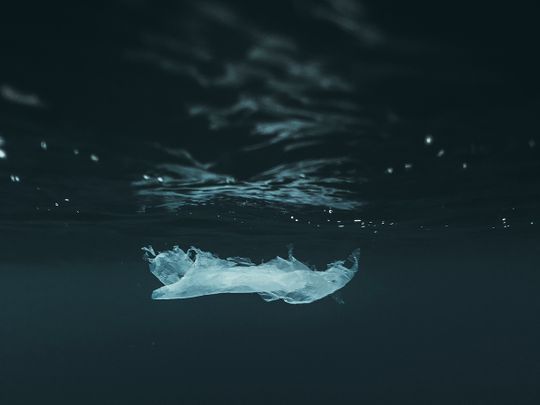
Over the past couple of decades, we’ve seen it in news stories, over and over again – large whales washing up on beaches around the world, with their stomachs full of plastic.
Click start to play today’s Spell It and create the word “ocean” with the letters provided.
But why do apex ocean predators end up eating plastic cups? Or why do whales consume large amounts of plastic? This was the case in Scotland in 2019, when a 10-year-old whale was found dead on the beach, with 90kg of plastic and other trash congealed in its digestive system.
According to a December 2019 report in National Geographic, to some fish – like anchovies – plastic may smell like food. So, they consume it, not knowing any better. But why do so many kinds of whales – sperm whales, pilot whales and beaked whales – ingest plastic?
For one, researchers think it’s because plastic is everywhere in the ocean. According to US-based nonprofit Ocean Conservancy, 11 million tons of plastic enter the oceans every year – and that’s on top of the 200 million tons of plastic already circulating underwater.
According to National Geographic, when deep-diving marine animals, like sperm whales, hunt more than 1,600 feet below the ocean’s surface, they use echolocation to locate their food. It might be possible then, that plastic trash sounds like food to these whales.
And yes, there’s plastic even in the deepest parts of the ocean – tiny bits have even been found in the Mariana Trench, the world’s deepest point, and shrimp-like creatures have been known to eat it.
In other cases, animals have natural filters that protect them for ingesting large amounts of plastic. Humpbacks and blue whales have brush-like baleen for teeth, and narrow throats – so they can’t eat anything bigger than krill. It’s why you won’t likely see beached humpbacks or blue whales. However, scientists are currently studying whether baleen protects these animals from smaller plastic particles.
Unfortunately, even if the marine animals do consume small bits of plastic, over time, it manifests as an unrelenting hunger or lethargy. This has a huge impact on the animal’s life – without enough energy, it would not be able to breed, migrate or forage for food.
There’s no doubt about it – plastic in the oceans is perhaps one of the biggest challenges facing the marine environment today.
What could be done about it? Play today’s Spell It and tell us at games@gulfnews.com.




